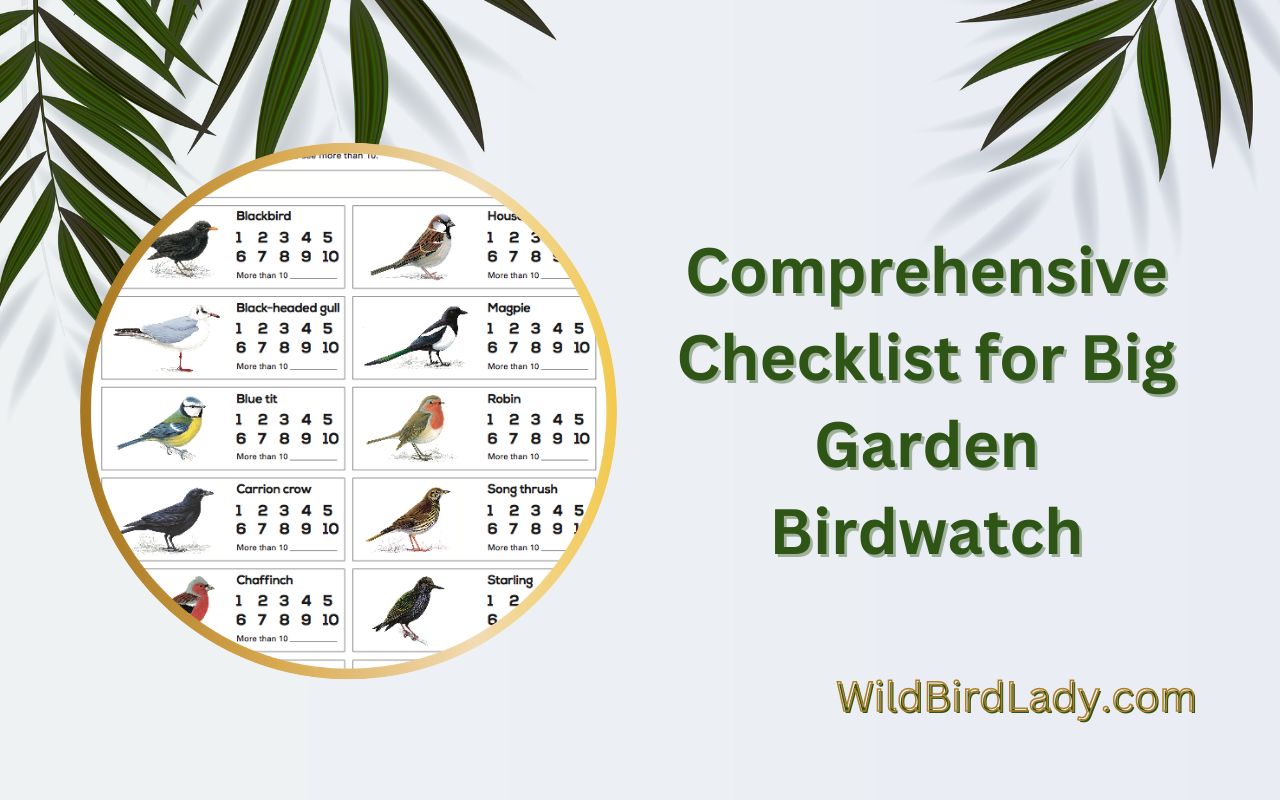Do you have a passion for nature and want to contribute towards scientific research? If yes, the Big Garden Birdwatch 2023 is the perfect opportunity for you! This annual event provides a valuable snapshot of the UK’s bird population and allows people of all ages and abilities to get involved in citizen science. However, effective participation in the Big Garden Birdwatch requires some preparation. To ensure your contribution is as impactful as possible, we have created a comprehensive checklist that covers everything you need to know before the event. From preparing your garden to choosing the right equipment, this checklist will help you to make the most of your time observing and recording birds on the 29th and 30th of January, 2023.
Introduction to Big Garden Birdwatch 2023
The Big Garden Birdwatch is one of the UK’s largest citizen science wildlife surveys, and it was back in 2023. This year’s event will take place on the 27th-29th of January, and it’s open to anyone interested in birds and conservation. Participants are asked to spend one hour watching and recording the birds they see in their gardens or local green spaces. The data collected will give conservationists invaluable information about which species are thriving and which ones are struggling and allow them to form a plan of action to help bird populations. Over 700,000 people participated in last year’s event, counting 11 million birds, making it a vital contribution to bird conservation in the UK.
Birdwatching is an excellent activity for people of all ages, and it’s a relaxing and fascinating way to connect with nature and learn about British birds. The Big Garden Birdwatch offers an opportunity for families to get into nature together, and it’s a perfect way to get children interested in wildlife. The event requires only one hour of your time, and you can watch the birds from the comfort of your home or balcony. No garden? Not a problem! Even a small window feeder can attract birds to your Birdwatch and help contribute to this essential conservation survey.
Taking part in the Big Garden Birdwatch is simple and straightforward. All you need to do is sign up on the RSPB website and complete the survey form. The website also offers helpful tips on identifying birds, attracting them to your garden and advice on the best bird foods to feed different species. Once you’ve registered, you will receive reminders and updates via email to help you prepare for the event. After you have completed your hour of observing the birds, you must submit your findings to the RSPB.
The event not only provides valuable information about bird populations in the UK, but it’s also an opportunity to help our feathered friends. Our birds struggle to survive with fewer green spaces, pollution, and a changing climate. By providing food, shelter and safe spaces for birds in our gardens, we can give nature a helping hand. The Big Garden Birdwatch allows you to make a real difference in conserving British birds. Join the event and help protect our feathered friends for future generations. [1][2]
Factoid
🐦 Protecting your windows with bird tape, installing window decals, using netting or screens, placing colorful objects, using strip curtains or acrylic sheets, adding external shades or films, planting shrubs or trees, applying soap or chalk outlines, installing automated bird deterrent systems are some effective ways to stop birds from flying into your windows. Birds are a beautiful part of nature, but seeing them fly into windows and hurt themselves can be distressing.
Importance of Monitoring Bird Populations
The monitoring of bird populations has been a vital aspect of conservation efforts. With one in four bird species in serious decline, the need for monitoring has never been more crucial. Citizen science projects such as the Big Garden Birdwatch are important in maintaining a clear and up-to-date understanding of how different bird species are faring. By recording the birds they see in their gardens or local green spaces, participants can help conservationists build a better picture of bird populations in the country. The data gathered through these efforts helps conservationists to understand which species are thriving, which are struggling, and provides clues as to how these birds can be protected. Monitoring bird populations is essential in sustaining and safeguarding biodiversity.
The decline in bird populations has been a cause for concern globally. Great Britain alone has lost over 38 million birds in the past 50 years, with 70 new bird species being added to the RSPB’s Red List in 2021. The RSPB started the Big Garden Birdwatch as a means to keep track of British bird populations. The event is now in its 44th year and is the largest garden wildlife citizen science project in the UK. It provides a vital snapshot of which species are flourishing and which are struggling, thus helping conservationists formulate plans of action to protect these birds. In addition to providing data, monitoring bird populations through citizen science efforts like the Big Garden Birdwatch also encourages people to become more engaged with local biodiversity and conservation efforts. [3][4]
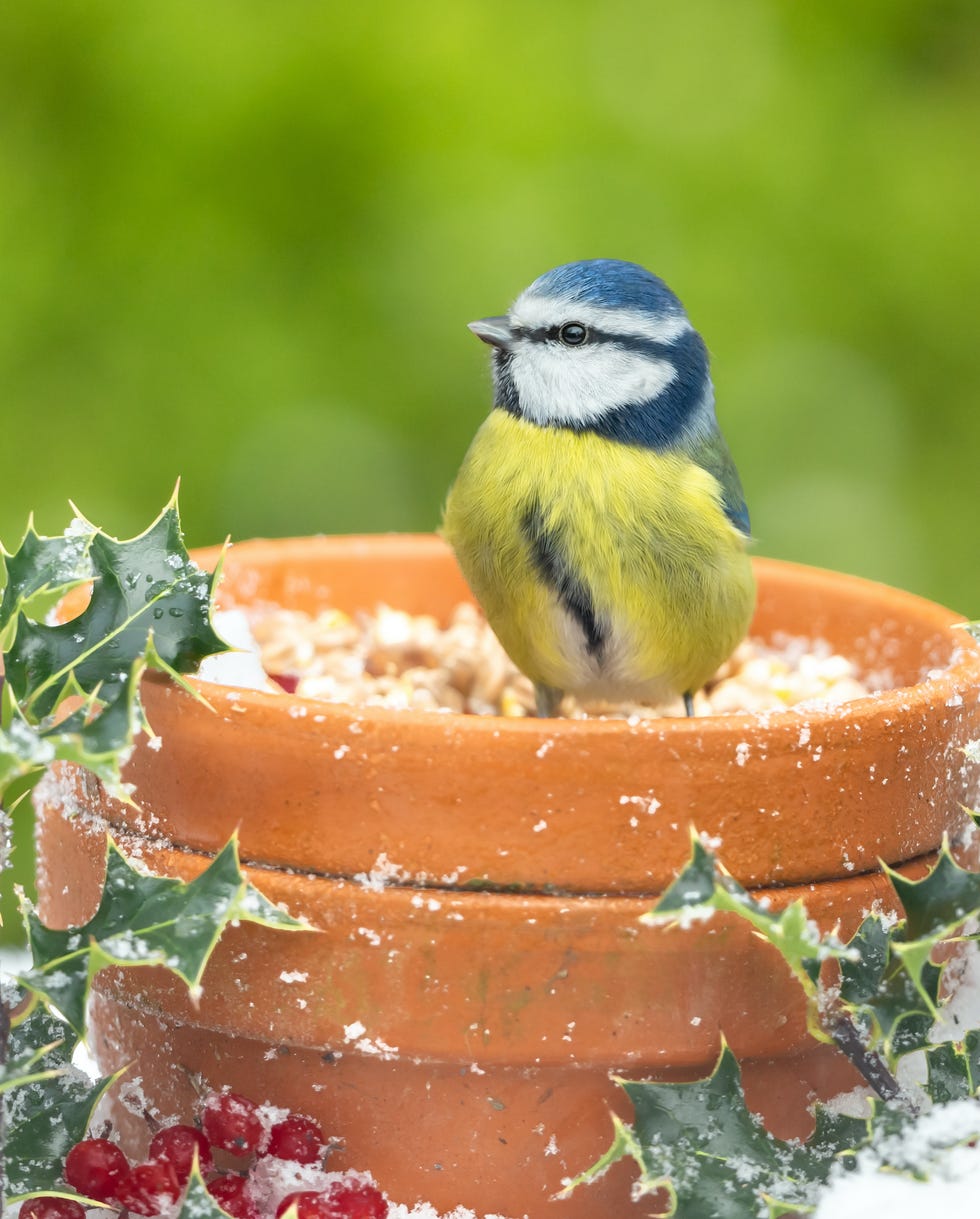
Bird Species to Spot in Your Garden in Winter
Winter is exciting for bird lovers as many species migrate to the UK to escape colder climates. If you’re participating in the Big Garden Birdwatch 2023, knowing which birds to look out for in your garden is essential. Some of the most common birds you might spot include the blue tit, great tit, coal tit, and long-tailed tit. Look out for the robin with its bright red breast, the blackbird with its melodious song, and the common chaffinch, easily recognizable by its distinctive song. The dunnock, which often goes unnoticed, is also known as the hedge sparrow as it is often seen in hedges and gardens. Keep an eye out for the nuthatch that runs up and down tree trunks and the wren that often nests in dense shrubs and hedges.
Winter is a tough time for garden birds to find food. To attract them to your garden, ensure you have plenty of feeders filled with birdseed mixtures, peanuts, and mealworms. You can also provide fruit, such as apples and pears, and water in a shallow dish or bird bath. Once they have discovered a food source, birds will return regularly, making it an ideal opportunity to observe them. Watching their feeding habits can be fascinating, and you might spot some unexpected species such as the siskin or the redpoll. Additionally, if you see a bird with an injured wing, consider contacting a bird sanctuary or specialist organization as they can often provide care and rehabilitation.
Birdwatching is an enjoyable activity that can be enjoyed from the comfort of your own home. Sitting quietly and observing garden birds in their natural habitat can be incredibly peaceful and therapeutic. It’s also an excellent opportunity to learn about birds in your local area, their habits, and their needs. With so many species to discover and observe, why not make the Big Garden Birdwatch 2023 an annual tradition? By doing so, you can make a valuable contribution to the work of conservationists, helping to protect UK bird populations for generations to come. [5][6]
Dates for the Big Garden Birdwatch 2023
The Big Garden Birdwatch is one of the largest citizen science projects in the world, and it is back for 2023. From the 27th to the 29th January, people across the UK can participate in the event by counting the birds in their gardens, balconies, or local parks for one hour. The results are submitted to the RSPB via their website or by post if necessary. All it takes is one hour, and anyone can participate regardless of whether they are RSPB members.
By submitting their results, participants can be proud to have contributed to one of the most extensive and comprehensive datasets about local birds’ abundance and distribution. This data is used to help conservationists understand how local bird populations are faring and what actions can be taken to protect them. The 2022 Big Garden Birdwatch results showed the house sparrow to be the most frequently reported species, with blue tits and starlings taking second and third place, respectively.
Participants are encouraged to identify and count the maximum number of each species they see at any one time to ensure they do not count the same bird more than once. This method provides a more accurate dataset that is easier to analyze. Participants are also asked to note down any other wildlife that they spot during the hour, even if they do not see any birds.
The Big Garden Birdwatch is an excellent opportunity for people to connect with nature, spend time outdoors, and contribute to conservation efforts. The event is a fun and educational way for people of all ages and abilities to learn about local wildlife and appreciate the importance of protecting it. The RSPB provides plenty of resources, including bird identification guides, to help participants get started.
The results of Birdwatch 2023 are expected to be published in April, giving participants plenty of time to get excited and anticipate the results. The RSPB encourages participants to share their experiences on social media using the hashtag #BigGardenBirdWatch. This allows nature lovers to connect with each other and share their experiences while waiting for the results to come out. The Big Garden Birdwatch is an exciting and meaningful event that anyone can participate in, and the RSPB is looking forward to welcoming new and returning participants for Birdwatch 2023. [7][8]
How to Take Part in the Birdwatch
The Big Garden Birdwatch 2023 is just around the corner, and it’s a great opportunity to enjoy a relaxing and fascinating activity for all ages to enjoy from the comfort of home. To participate in the birdwatch, you must spend one hour watching and recording the birds in your garden or local green space and send your results to the RSPB. Remember to count only the birds that land, not the ones flying by, and get a decent bird ID guide to prepare for the event. You can also attract birds to your garden by providing them with the best foods to feed and tips on caring for wild birds.
Even if you don’t have a garden, you can still take part in the Big Garden Birdwatch 2023. Just set up a small window feeder to attract more birds to your Birdwatch and count the birds you see in your balcony. The more people that take part, the better for our bird populations. Not seeing anything is still worth submitting, as it helps identify which birds don’t visit your area and contributes to understanding which species are thriving or struggling.
The annual Big Garden Birdwatch takes place on January 27th to 29th, 2023, for the UK’s largest garden-based citizen science project. It’s a vital opportunity for the RSPB to keep track of the population of British birds, with one in four birds in serious decline. By taking part in the birdwatch, you’ll be playing a crucial role in helping conservationists build a valuable picture of each species’ conditions and form a plan of action to help native birds.
The RSPB continues to rely on people nationwide’s help to record the birds they see in the Big Garden Birdwatch. Last year, almost 700,000 people took part, counting over 11 million birds. The event has been running for 44 years and is the world’s largest wildlife survey. Birds face greater challenges due to the climate emergency, and every birdwatch matters to protect our birds for future generations.
In the past 50 years, the UK has lost over 38 million birds, and 70 new bird species were added to the RSPB’s Red List in 2021. This loss highlights the importance of monitoring and conserving bird populations, with the Big Garden Birdwatch 2023 providing valuable data to inform environmental changes. This event is a great chance to get children interested in wildlife and encourage them to take a keen interest in protecting birds. [9][10]
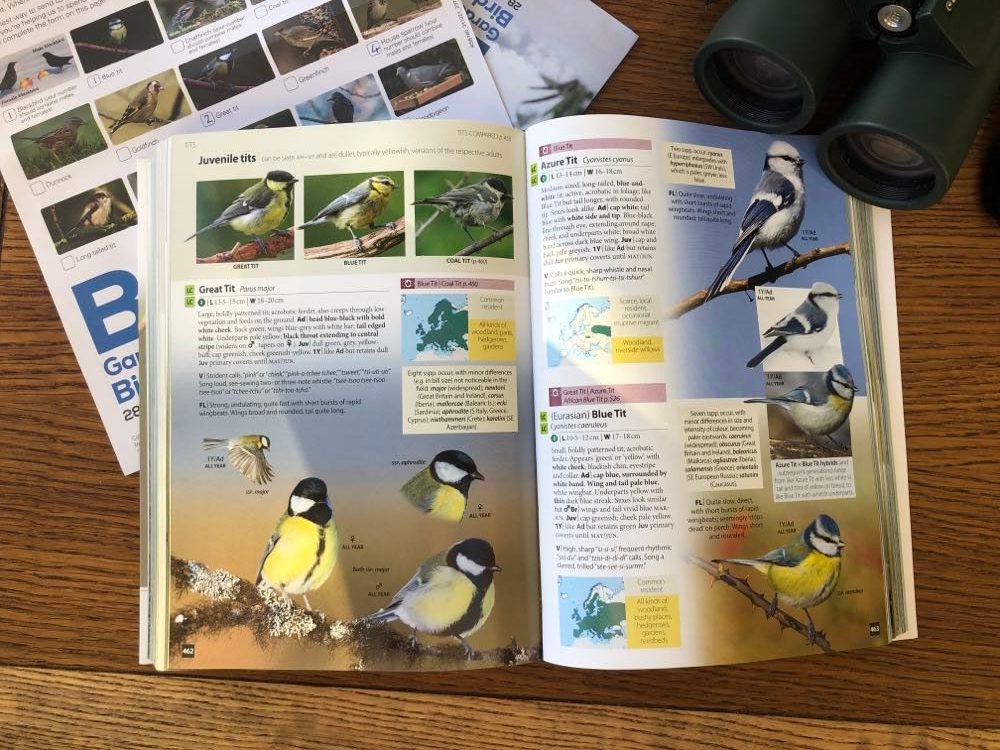
Accurately Counting the Birds You See
The RSPB Big Garden Birdwatch 2023 is quickly approaching, and many people are looking forward to participating in this beloved annual event. Accurately counting the birds you see during the birdwatch is essential to obtaining accurate data. If you’re participating this year, make sure to count only the number of birds you see at the same time. This ensures that you aren’t counting the same bird over and over again, which would give an inaccurate reflection of the number of birds in your garden. Remember, if you spot two of the same bird at the same time, count two! Follow these simple guidelines to ensure that your contribution to the RSPB Big Garden Birdwatch 2023 is as accurate as possible.
During your Big Garden Birdwatch, it’s crucial to be efficient in counting the birds you see. Observing a single bird at different times would not accurately reflect the bird population in your garden. For instance, if you observe a Dunnock under your bird feeders, then watch another Dunnock perching on your Wisteria branches, and finally find a Dunnock somewhere else in your garden, you should only count one Dunnock. Taking note of the highest number of each bird species you see at any one time ensures that you obtain accurate data. Make sure to follow these guidelines so that your contribution to the RSPB Big Garden Birdwatch 2023 is as accurate as possible.
The RSPB Big Garden Birdwatch 2023 is an impactful event, providing the RSPB with invaluable data. Your results are integral as they help the RSPB understand and learn more about the birds present in Britain during January 2023, which birds are frequently seen, and which are not commonly found or are absent. The records made by those taking part in the Big Garden Birdwatch are crucial in preserving bird wildlife for future generations. Hence, it is essential to submit your findings to the RSPB. Your contribution could help protect and preserve our birds and wildlife.
The importance of submitting your birdwatch count to the RSPB cannot be overstated. The data obtained through the Big Garden Birdwatch has been instrumental in highlighting the winners and losers in the garden bird community over the last four decades. The event was the first to alert the RSPB to the decline in numbers, which has drastically reduced compared to the first Big Garden Birdwatch in 1979. This shows your contribution’s impact in helping us understand how UK birds are faring. Thus, make sure to share your results with the RSPB.
It’s essential to keep in mind how busy these times are for our garden birds’ communities. The birdwatch findings are vital, particularly with them facing many challenges due to the climate emergency. You can participate in the Big Garden Birdwatch 2023 by spending an hour watching and recording the birds on your balcony, in your garden, or local park during the weekend. By participating, you’ll play an important role in helping the RSPB understand how UK birds are doing. The RSPB Big Schools’ Birdwatch is another event you can participate in to connect children with nature in their school grounds.
Participating in the RSPB Big Garden Birdwatch 2023 could be an uplifting and heartwarming experience. As you take the time to observe garden birds, appreciate the beauty that nature provides. Our garden birds are counting on us to take action to protect and preserve them for future generations. [11][12]
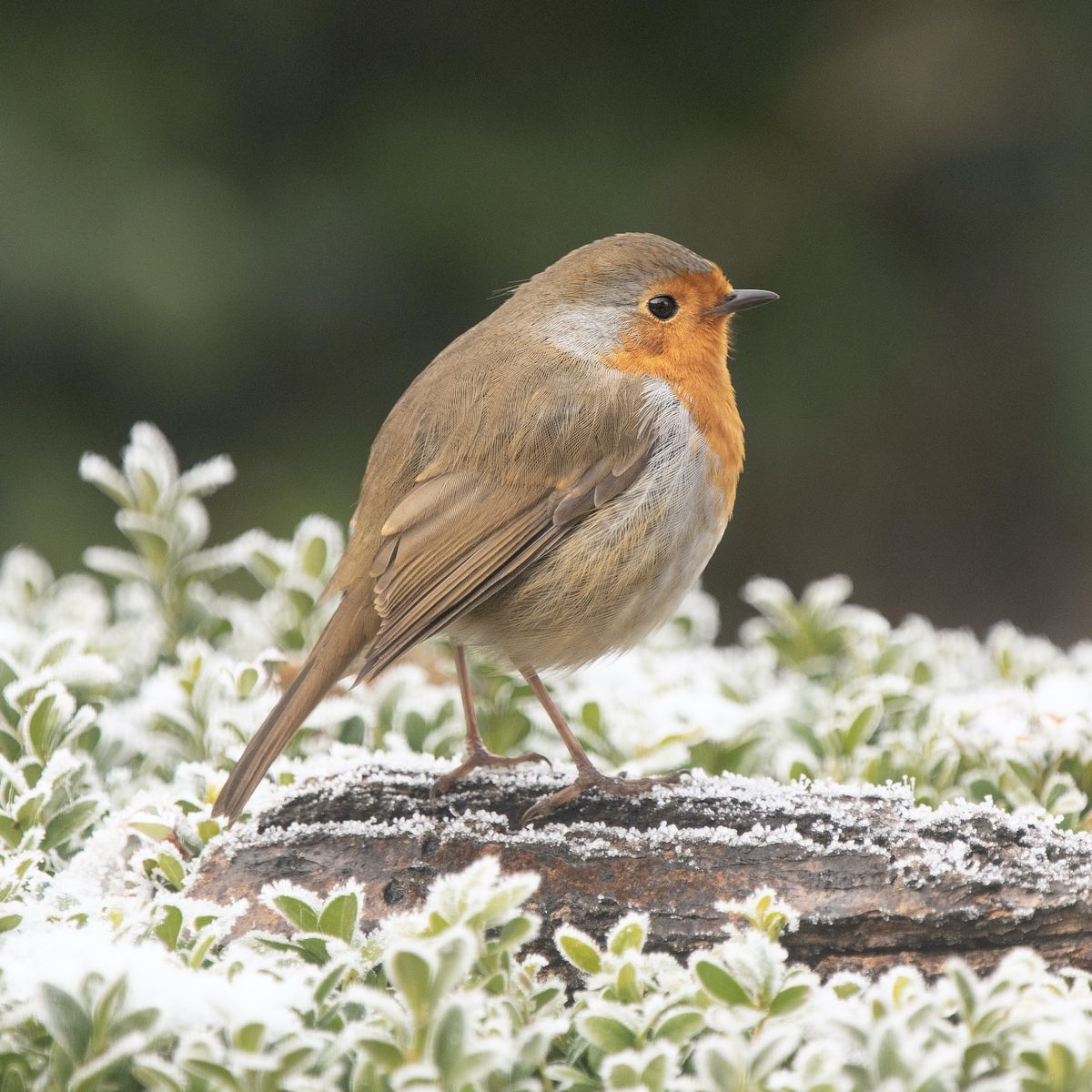
Personal Experience with Birdwatching
The Big Garden Birdwatch is an exciting event that encourages people of all ages to take an hour to observe and record the bird species that visit their gardens or local park. Birdwatching is a relaxing activity that connects people with nature, and it is also an important way to keep track of bird populations and contribute to conservation efforts. As an avid birdwatcher, Sarah has participated in the Big Garden Birdwatch for several years. She loves observing the bird species visiting her garden and recording their behaviours and characteristics. Sarah also takes note of the changes in bird populations over time, which is an important aspect of conservation research. By participating in the Big Garden Birdwatch, Sarah feels like she is making a meaningful contribution to preserving the natural world and learning more about the amazing birds that share our environment. [13][14]

Bird Food and Avian Flu Concerns
As bird lovers gear up for the 2023 Big Garden Birdwatch, one essential aspect to consider is bird food. It is crucial to have enough bird food to ensure the birds keep coming back to your garden. To get the best results, try offering a variety of food types. For example, some birds like seeds while others prefer mealworms or suet. Another important note to consider is avian flu. To avoid attracting sick birds, it is wise to avoid feeding any birds that appear unwell or have damaged feathers or droppings.
While feeding birds can be a great way to connect with them, it is essential to remember the potential risk of avian flu. Therefore, to avoid attracting sick birds, it is vital to ensure that any bird food offered is fresh and hygienic. Bird feeders should be cleaned regularly to prevent the spread of disease amongst birds. To prevent contamination, use gloves and wash hands and surfaces with warm soapy water after cleaning feeders and bird baths.
To offer the best quality bird food, ensure it is purchased from a reputable supplier. It is advisable to buy fresh bird food produced in the UK, as certain countries have different regulations and standards for producing bird food. Always check the production date and ensure that the food has not expired.
In addition to providing bird food, it is also important to offer clean water for drinking and bathing. It is preferred to have shallow water sources, such as trays or shallow dishes, to protect birds from drowning. Previously, there was a concern about bird baths transmitting bird flu virus; however, recent studies have shown that it’s unlikely for birds to contract the virus this way.
By being mindful of bird food and avian flu concerns, bird lovers can participate in the 2023 Big Garden Birdwatch safely and responsibly. This can help them connect with the natural world, enjoy the beauty of birds, and contribute to conservation efforts. [15][16]
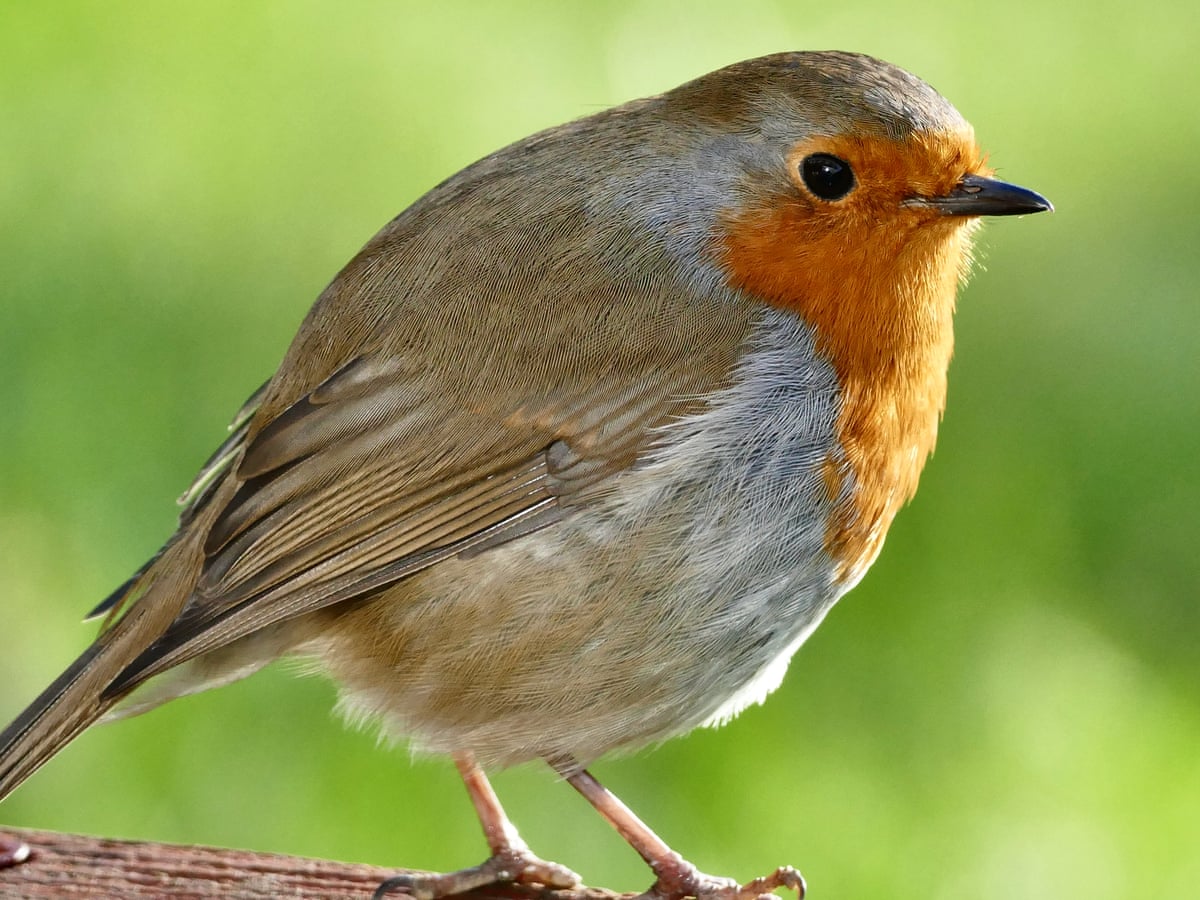
Importance of Submitting Findings to the RSPB
The Big Garden Birdwatch is not just a fun activity to pass the time, but it also serves a very important purpose. By participating and submitting your findings to the RSPB, you are contributing valuable data that can help inform environmental changes and conservation efforts. With over 40 years’ worth of surveys and half a million people taking part every year, the RSPB can gather crucial information on bird and wildlife trends in the UK. Your contribution may seem small, but it is vital in helping to protect our feathered friends for generations to come.
It is essential to submit your results, even if you did not see anything during your hour of observation. Knowing which birds do not visit certain areas is just as important as understanding those which do. The RSPB encourages you to submit your results online or by post. Every count is valuable, so do not be discouraged if you did not see many birds. Your data is still greatly appreciated, and it helps create a comprehensive picture of the UK’s bird population.
By participating and submitting your findings, you are helping to understand and tackle the challenges that birds face. Over the last 50 years, the UK has lost 38 million birds, including many of our backyard favourites. These are worrying figures, but the Big Garden Birdwatch is one way to help make a difference. Your participation may seem small, but it is part of a larger initiative that can significantly impact conservation efforts.
In addition to contributing to conservation efforts, participating in the Big Garden Birdwatch can offer many benefits to you. It is an opportunity to connect with nature, learn about different bird species and their behaviours. Observing wildlife is a calming and rewarding experience, and it can be a source of joy for everyone in the family. Engaging in the natural world can improve our mental and physical well-being.
In conclusion, participating in the Big Garden Birdwatch and submitting your findings to the RSPB is an essential activity that serves a vital purpose. Your contribution is valuable in understanding and tackling birds’ challenges and protecting them for future generations. This annual event is a fun, educational, and rewarding experience that anyone can enjoy. So grab your binoculars and head to your garden or balcony to start observing and making a difference today. [17][18]

Results and insights from the Big Garden Birdwatch 2023
The Big Garden Birdwatch 2023 has come to a close, and the results are in! With almost 700,000 participants, it remains the UK’s largest garden wildlife citizen science project. The house sparrow once again claimed the top spot as the most commonly sighted garden bird, followed by the starling and the blue tit. However, there were some changes in the top 10, with the chaffinch bumping the robin from its usual position. The survey also showed that more people reported seeing collared doves and goldcrests, indicating a potential increase in their populations. These insights from the Big Garden Birdwatch provide important data for conservationists better to understand the state of the UK’s bird populations.
This year’s survey also highlighted the importance of garden habitats for birds, particularly during winter. Gardens provide a vital food, shelter, and nesting site for many bird species, especially as natural habitats continue to decline. By participating in the Big Garden Birdwatch, participants contribute to a valuable conservation effort and gain a deeper appreciation and understanding of the wildlife in their backyard.
The birdwatch is also a great opportunity to get children interested in nature and science. Many schools encourage their students to participate, using the survey as a fun and educational activity. The RSPB has a range of resources available for educators, including lesson plans and activities to help children learn about birds and their habitats.
This year’s birdwatch results show that citizen science effectively gathers data on wildlife populations. By engaging the public in scientific research, conservationists can collect data on a vast scale, providing a comprehensive picture of the state of nature in the UK. The Big Garden Birdwatch is just one example of how ordinary people can contribute meaningfully to scientific research and conservation efforts.
If you missed out on this year’s survey, don’t worry – there are plenty of other ways to get involved in citizen science and nature conservation. The RSPB has an array of projects and initiatives aimed at protecting birds and their habitats, from community gardening schemes to campaigns against illegal wildlife trade. By joining the RSPB or participating in one of their programs, you can make a meaningful contribution to wildlife conservation and make a difference for the birds and other wildlife that depend on us. [19][20]
Frequently Asked Questions
Q: Do I need a garden to participate in the Big Garden Birdwatch?
A: No, you don’t need a garden. Even a small window feeder can attract birds to your birdwatching activity and contribute to the conservation survey.
Q: How does participating in the Big Garden Birdwatch help conservation efforts?
A: By recording the birds you see during the event, you contribute valuable data that helps conservationists understand bird populations and make informed decisions regarding environmental changes and conservation efforts.
Q: How do I ensure accurate results during the Big Garden Birdwatch?
A: Count only the number of birds you see at the same time. Avoid counting the same bird repeatedly. Following the provided guidelines will ensure your contribution is as accurate as possible.
Q: What should I do if I didn’t see any birds during my observation hour?
A: It’s still important to submit your results, even if you didn’t see any birds. Knowing which birds do not visit certain areas is also valuable information for conservationists.
Q: How can I attract birds to my garden for the Big Garden Birdwatch?
A: Ensure you have plenty of feeders filled with birdseed mixtures, peanuts, and mealworms. Offering a variety of food types can attract a diverse range of bird species.
Q: How does the Big Garden Birdwatch contribute to understanding bird populations?
A: Over the years, the Big Garden Birdwatch has provided valuable data on bird and wildlife trends in the UK. The collective efforts of participants help build a comprehensive picture of the country’s bird population.
Final Takeaway
I hope this comprehensive checklist for the Big Garden Birdwatch in 2023 has been helpful in preparing for the event. Remember, every bird count matters in building our understanding of the health of our wildlife population. Let’s continue to do our part to support and protect these beautiful creatures. Happy birdwatching from the Wild Bird Lady!
Latest Posts
The Ultimate List: Top 8 Best Birdwatching Podcasts for Avid Birders
Looking for the top birdwatching podcasts? Here are the eight best options to tune into today! Birdwatching can be a thrilling, immersive experience that brings...
Stop Squirrels in Their Tracks: 10 Effective Ways to Safeguard Your Bird Feeder Pole
To prevent squirrels from climbing your bird feeder pole, use squirrel baffles and slippery poles. Here are ten effective ways to keep squirrels from stealing bird food and damaging bird feeders. ...

